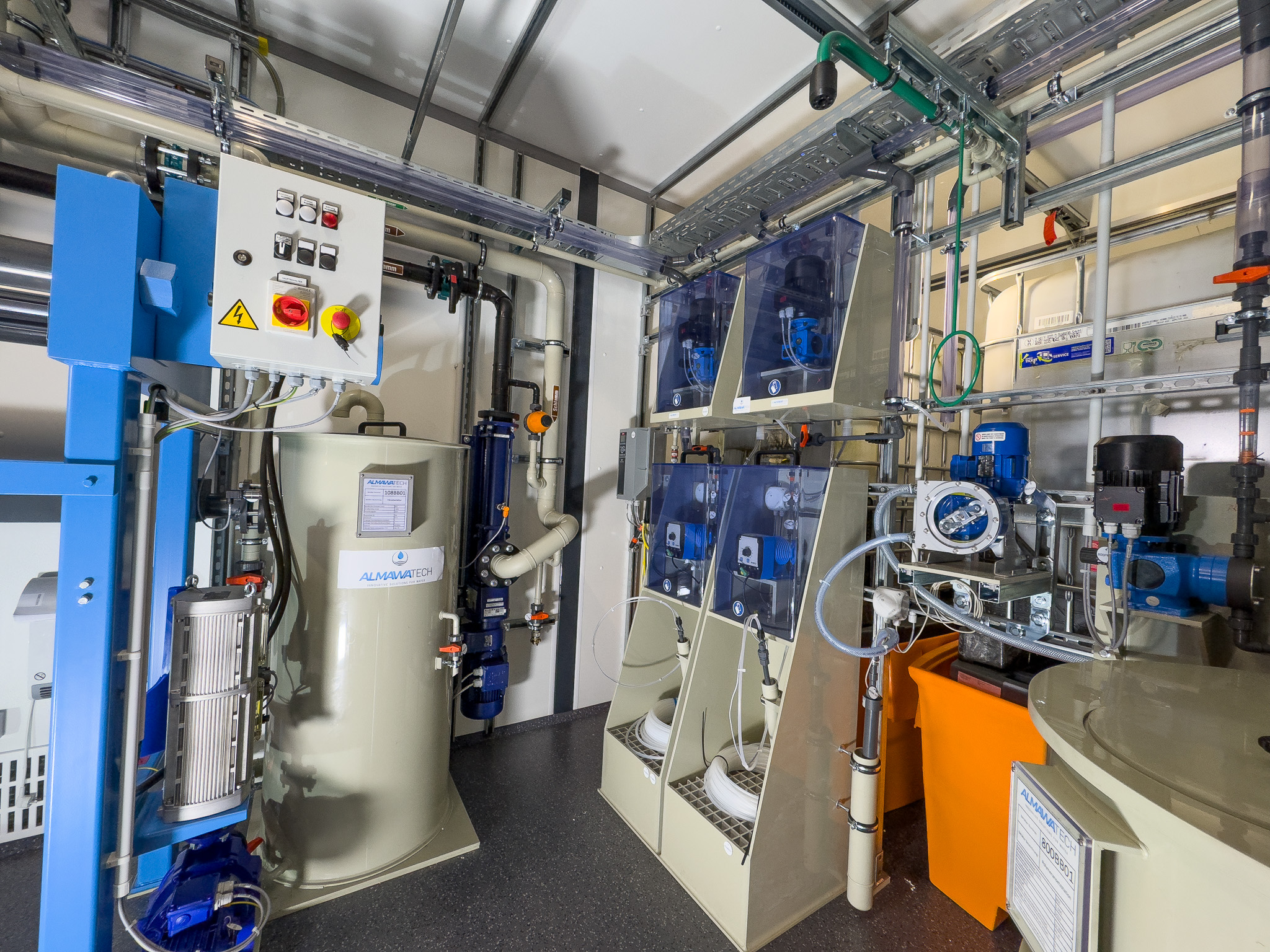The peristaltic pump, also known as a peristaltic pump, is a special type of positive displacement pump that enables the precise pumping of liquids by periodically compressing a flexible hose or pipe. This technology is widely used in industrial water and wastewater treatment due to its versatility, its ability to pump viscous and abrasive media and its gentle pumping principle.
Table of contents
How the peristaltic pump works
The peristaltic pump is based on the principle of peristalsis, a process that is reminiscent of the natural movement of the digestive tract. The fluid is pumped by rhythmically compressing and releasing the tube.
Central components:
- Hose: Flexible line, usually made of elastic materials such as EPDM, NBR or silicone, which can withstand the pumped media.
- Rotor with rollers or sliding shoes: Rotating components that compress the hose and push the liquid forward.
- Housing: Protection of the pump mechanism and sealing against external influences.
Promotion process:
- Compression: The rotor compresses the hose at one point, creating a tight seal that prevents the liquid from flowing back.
- Displacement: The movement of the rollers along the hose pushes the liquid inside the hose forward.
- Relaxation: After passing the rotor, the hose expands and creates a vacuum that draws in the liquid from the suction side.
Funding characteristics:
- Linear delivery rate:
- The flow rate is directly proportional to the rotational speed of the rotor and the hose size.
- Pulsation conveyor:
- The flow is not continuous, but takes place in small spurts.
- Linear delivery rate:
Technical features
Print area:
- Peristaltic pumps usually operate in the low pressure range (up to 10 bar), but can also handle higher pressures depending on the model.
Delivery rates:
- Conveying capacities range from a few milliliters per hour to several cubic meters per hour.
Media compatibility:
- Suitable for abrasive, highly viscous, corrosive or sensitive media.
- Typical pumped media:
- Chemicals (acids, alkalis).
- Sludge (e.g. sewage sludge).
- Liquids containing solids.
- Food and organic products.
Self-priming:
- Peristaltic pumps can draw in liquids from a low level (dry suction), which makes them particularly flexible.
Dry-running capability:
- In contrast to many other pump types, peristaltic pumps can run dry without being damaged.

Photo: Peristaltic pump (right, blue) for dosing viscous polymer concentrate(CP system ALMA CHEM MCW)
Materials for the hose
The choice of hose material is crucial to ensure a long service life and chemical resistance:
- EPDM (ethylene propylene diene rubber):
- Resistant to alkaline solutions, water and some chemicals.
- NBR (nitrile butadiene rubber):
- Suitable for oily and greasy media.
- Silicone:
- Flexible and resistant to a wide range of chemicals.
- PTFE (Teflon-coated):
- Highly chemically resistant, ideal for aggressive chemicals.
Advantages of the peristaltic pump
Gentle conveying principle:
- No direct contact of mechanical parts with the liquid, ideal for sensitive or shear-sensitive media.
High flexibility:
- Peristaltic pumps can be used for both abrasive and viscous media without the need for complex adjustments.
Ease of maintenance:
- The hose can be replaced quickly and easily, which reduces downtime.
Precise dosing:
- Due to the linear delivery characteristics, peristaltic pumps can be used for precise dosing applications, for example for chemical dosing in water treatment.
Easy to clean:
- Ideal for applications where hygiene is important, as the hose can be completely replaced or rinsed.
Self-priming and dry running:
- Particularly advantageous for applications where intermittent delivery is required.
Disadvantages and challenges
Limited pressure resistance:
- Compared to other pump types (e.g. piston pumps), the pressure stability is limited.
Hose wear:
- The hose is subject to mechanical wear due to repeated compression and stretching. Regular replacement is necessary.
Pulsation:
- The flow rate is not uniform, which must be compensated for by pulsation dampers in sensitive processes.
Energy consumption:
- Due to the constant mechanical contact between rotor and hose, the energy requirement is higher than for pumps with continuous flow.
Design and optimization
The selection and dimensioning of a peristaltic pump depends on the specific process requirements:
Conveying capacity:
- Depending on the hose size, rotor speed and viscosity of the medium.
Material compatibility:
- The hose must be chemically resistant to the pumped medium.
Operating temperature and pressure:
- The temperature of the medium must not exceed the material limits of the hose. The pressure requirements determine the pump type.
Service life of the hose:
- The service life of the hose is a critical cost factor and is influenced by the properties of the medium (abrasive, chemically aggressive) and the operating parameters.
Conclusion
The peristaltic pump is a versatile and reliable tool in water and wastewater treatment, characterized by its simple design, chemical resistance and flexibility. It is particularly suitable for applications where abrasive, viscous or sensitive media need to be pumped. Despite its limitations, such as hose wear and limited pressure capacity, the peristaltic pump is an indispensable technology in industrial water technology due to its precision and ease of maintenance. Careful material selection and process monitoring are crucial to ensure the efficiency and longevity of the peristaltic pump.
For further information on our products, please feel free to contact us at any time!








